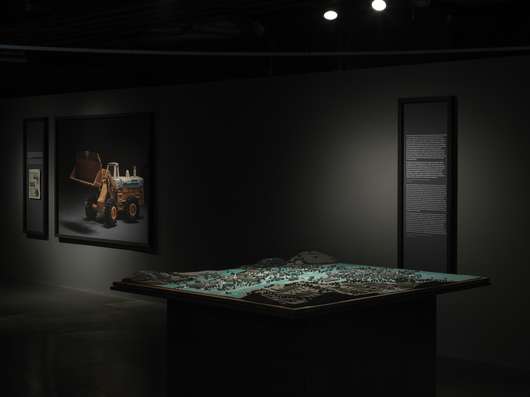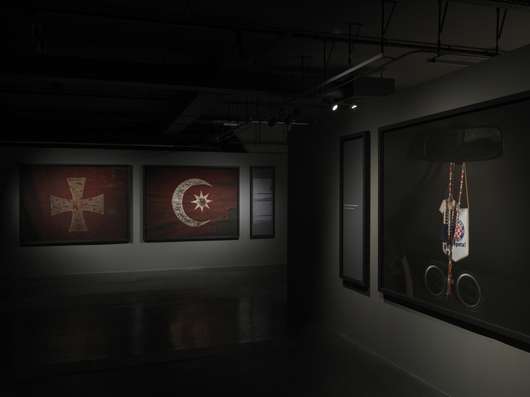Jaka Babnik: Pygmalion
Each of the objects or their photographic images exhibited has a very specific symbolic value that can only be recognised within the context it has been taken from: Tacitus’ Germania, an ex-voto figure from the Church of the Mother of God at Mount Brinjeva gora, Tina Maze’s Olympic gold medal, a silicone breast implant, a voting box from the 1990 referendum or a tiny fragment of the Berlin Wall, to mention just a few.
The myth of Pygmalion and Galatea, from Book 10 of Ovid’s Metamorphoses, can be regarded as a symbolic thread running through artist Jaka Babnik’s latest exhibition project. The myth has been recreated many times in literature, painting, sculpture and popular culture, no doubt due to the universal social themes contained within it.
It should be stressed from the very beginning that this exhibition is not in any way a direct appropriation of the myth of Pygmalion and Galatea. Rather, the myth serves as a symbolic backdrop, facilitating in both substantive and formal terms a reflection on the relationship that invariably arises between the chosen object, its photographic image, and the space in which they are viewed. Given that the myth ends with a representation of a state of perfect fulfilment – Pygmalion’s relationship with his own creation, Galatea – Babnik’s latest project can be understood as a direct criticism of the relationships and mechanisms underlying the values of contemporary society.
None of us can return to a state of innocence: we cannot free ourselves from the ideas and symbolic values that dominate our everyday lives, but we can question them, and judge them. The selection of the objects Babnik explores either by means of their actual presence or through their photographic images is therefore of central importance. Each of the objects or their photographic images exhibited has a very specific symbolic value that can only be recognised within the context it has been taken from: Tacitus’ Germania, ex-voto figures from the Church of the Mother of God at Mount Brinjeva gora, Tina Maze’s Olympic gold medal, a silicone breast implant, a voting box from the 1990 referendum or a tiny fragment of the Berlin Wall, to mention just a few. Rather than concerning himself with an object’s physical appearance, Babnik focuses on the symbolic value attributed to it by long-established social norms.
In addition to their visual value, the objects and photographs on display also represent a range of different time periods, geopolitical spaces and social structures, and the power relations between them. Babnik never loses sight of the relationship between what the viewer sees visually, and the symbolic meaning of the object in itself. As a result, what connects the objects and photographic images on display is not the theme or form of the exhibition, but the fact that each of them expresses, either visually or symbolically, an aspect of the state of perfect fulfilment. Whether – and how – the viewer recognises this state, however, is dependent on the way either that individual viewer or society as a whole experiences the object in question.
These elements are all complemented by a wider understanding of Babnik’s artistic explorations; this can be achieved by carefully analysing his works, the way they are presented, and their relationship to the spectator. The system investigated by Babnik is also the system in which he works; for this reason, the mechanisms and structures of the system necessarily form part of his language. When we recall the artist’s awareness that the form of the visual language is always just an expression of its inner content and that it is therefore important not to deify it, this exhibition project can be understood as a reflection on the role of the contemporary photographic image, and a fierce criticism of the values of contemporary society.
—Tevž Logar
The "Jaka Babnik: Pygmalion" exhibition is accompanied by a catalogue containing 33 photographs and texts written by Jaka Babnik, Dr George Baker, Dr Sami Khatib, Tevž Logar and Dr Katja ...
Colophon
Production: Museum and Galleries of Ljubljana
Artist: Jaka Babnik
Curator: Tevž Logar
Graphic and exhibition design: Bojan Lazarevič (Agora Proars)
Realisation of the exhibition: Technical Service MGML, O.K.vir
Editors of exhibition catalogue: Tevž Logar, Julija Hoda
Catalogue texts: Jaka Babnik, dr. George Baker, dr. Sami Khatib, Tevž Logar, dr. Katja Praznik
The project was made possible by: City of Ljubljana
Media sponsor: TAM-TAM
The opening was supported by: Tektonik kraft pivovarna, Tilia Estate
Location
Slovenska cesta 9
1000 Ljubljana
T +386 1 42 54 096
T +386 1 24 12 500
E galerija.jakopic@mgml.si
Opening hours
Tuesday–Sunday: 10 a.m.-6 p.m.
Monday: Closed
1 January, 1 November, 25 December: Closed
24 and 31 December: 10. a.m.-2 p.m.
Tickets
Adults: 5 €
Students, people over the age of 60, unemployed, people with disabilities: 3 €
Family ticket: 12 €
ICOM, PRESS, SMD, students of the Academy of Fine Arts and Design, VIST – Higher School of Applied Sciences, Faculty of Natural Sciences and Engineering – OTGO, Faculty of Design: Admission free
Guided tours of the exhibition: every Saturday at 4.30 p.m. (included in the admission fee)
Join the Friends of the Jakopič Gallery. The € 12 annual membership fee includes numerous benefits and exclusive events. Click here for more information.
Press kit

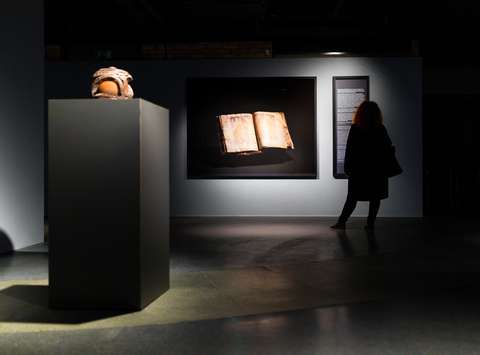

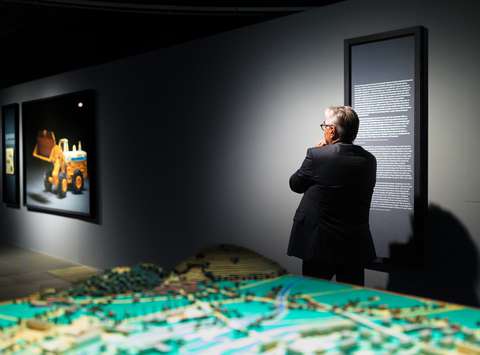

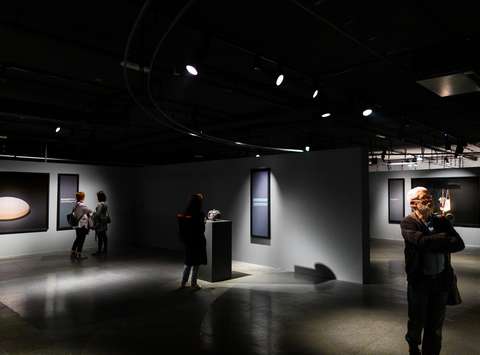
Events

